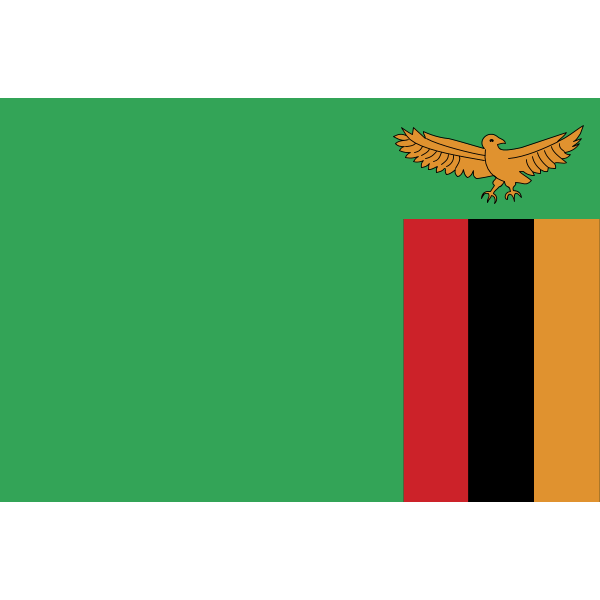Zambia
Zambia, in southern Africa, is a landlocked country of rugged terrain and diverse wildlife, with many parks and safari areas. On its border with Zimbabwe is famed Victoria Falls – indigenously called Mosi-oa-Tunya, or "Smoke That Thunders” – plunging a misty 108m into narrow Batoka Gorge. Spanning the Zambezi River just below the falls is Victoria Falls Bridge, a spectacular viewpoint.
Land
Zambia has a long land border on the west with Angola but is divided from its neighbours to the south by the Zambezi River. To the southwest is the thin projection of Namibian territory known as the Caprivi Strip, at the eastern end of which Zambia and three of its neighbours (Namibia, Botswana, and Zimbabwe) appear to meet at a point—a “quadripoint”—although the precise nature of the meeting is contested. Man-made Lake Kariba now forms part of the river border with Zimbabwe. Zambia’s other neighbours include Mozambique to the southeast, Malawi to the east, and Tanzania to the northeast. The long border with the Democratic Republic of the Congo starts at Lake Tanganyika, crosses to Lake Mweru, and follows the Luapula River to the Pedicle, a wedge of Congolese territory that cuts deep into Zambia to give the country its distinctive butterfly shape. Westward from the Pedicle the frontier follows the Zambezi-Congo watershed to the Angolan border.
Soils
Zambia is divided into three main agroecological regions based primarily upon annual precipitation; there is further variation within regions based on factors such as soil type, temperature, precipitation, and elevation. The first region includes portions of the southwestern corner of the country, as well as the country’s major valleys, such as the Gwembe, Zambezi, and Luangwa valleys. This region is the driest and most prone to drought, and its soils contain low levels of organic matter, low nutrient reserves, and high acidity levels. The second region spans the central part of the country and is divided into two subregions: the degraded plateau of the southeast, south-centre, and southwest and the Kalahari Sands and the Zambezi floodplain in the west. Soils of the Kalahari Sands have little agricultural potential and are mainly under woodland. The third region is situated in the northern part of the country; its soils tend to be highly weathered and leached, with a low pH.
Plant and animal life
On the plateau, miombo woodland is characteristic: a semicontinuous tree cover dominated by small leguminous trees of the Brachystegia and Julbernardia genera but with a significant grassy undergrowth. Burning of the grasses in the dry season causes the trees to develop a corky, fire-resistant bark. Mopane woodland, in which Colophospermum mopane dominates but in which the baobab is distinctive, occurs in the drier and hotter valleys of the Zambezi in the south and in the Luangwa valley. Zambezi teak (Baikiea plurijuga) occurs in the southern fringe of the area covered by the Kalahari Sands. Mukwa (Pterocarpus angolensis), a good furniture timber, is found in the Lake Bangweulu area. More than one-tenth of the country has been set aside as forest reserve or protected forest areas; in all, some two-fifths of the country’s land is under protection.
Where there is seasonal flooding—in swamps and on floodplains, notably in the Bangweulu and Lukanga regions, in the upper Zambezi, and on the Kafue Flats—open grasslands are characteristic. On the plateau the tree cover is broken by grass-covered dambos: shallow saucer-shaped valleys, often lacking a surface watercourse.
The variety of Zambia’s mammals is notable, and there are large concentrations on the major floodplains, particularly in the national parks of the Luangwa and Kafue valleys. Depletion of wildlife has occurred because of the spread of human activities outside the parks, while poaching is a serious threat within. The illegal trade in rhino horn has been responsible for the virtual elimination of the rhinoceros from Zambia, and poaching of elephants for their tusks has greatly reduced their numbers, despite government measures to deter the practice. There is a large range of smaller mammals and varied and numerous birdlife. The fish eagle, Zambia’s national emblem, is common on large stretches of open water.
Reptiles include crocodiles, tortoises, terrapins, a variety of lizards, and many poisonous and nonpoisonous snakes. Insects of most orders are prevalent. Termite mounds, often large and sometimes pinnacled, are a landscape feature of some areas and can hinder farming operations.
Zambia: Mosi-oa-Tunya National Park Zambia: Mosi-oa-Tunya National Park Mosi-oa-Tunya National Park, Zambia. lechwe lechwe Lechwe (Kobus leche). sitatunga sitatunga Sitatunga (Tragelaphus spekei). Wildlife is protected in a number of national parks and game-management areas, which together constitute some one-third of the country. Some national parks have tourist facilities; these include South and North Luangwa, Kafue, Lochinvar, Blue Lagoon, Sumbu, Nyika, and Mosi-oa-Tunya. Kafue, the oldest and largest of these parks (8,650 square miles [22,400 square km]), is on the plateau and has generally low game concentrations, although it is noted for the variety of species of antelope it hosts. Lake Itezhi-Tezhi, a reservoir behind a regulating dam on the Kafue, has flooded part of the park. South Luangwa (3,500 square miles [9,100 square km]) has one of Africa’s largest (but declining) elephant concentrations. North Luangwa offers true wilderness adventure: walking safaris. Thornicroft’s giraffe is unique to the Luangwa valley. The other parks are much smaller. Lochinvar, on the Kafue Flats, is of particular interest to bird-watchers, with more than 400 species recorded. The Kafue lechwe is unique to the flats. The Mosi-oa-Tunya National Park protects the environs of Victoria Falls and is recognized by UNESCO as a World Heritage site. Nyika National Park was established to preserve remnant patches of montane forest. Sumbu, on the shores of Lake Tanganyika, is renowned for easy sightings of the rare sitatunga, a type of aquatic antelope
